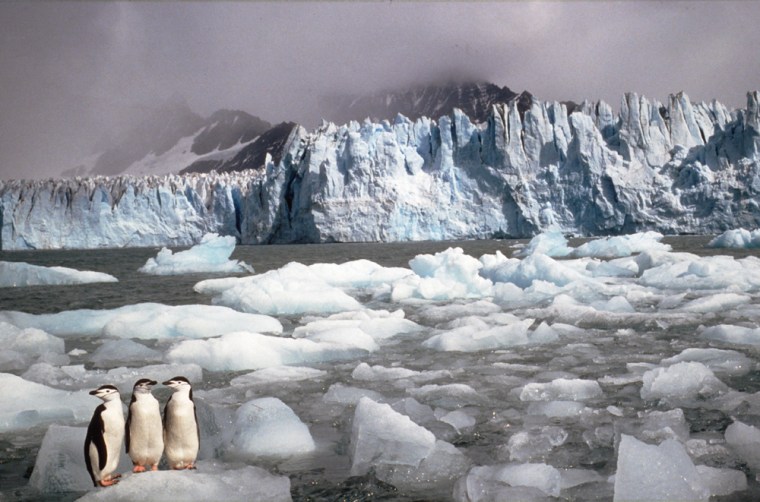Warmer temperatures and disappearing sea ice in the Southern Ocean appear to be causing food shortages that could threaten Antarctic whales, seals and penguins, scientists said in a study released Wednesday.
The vanishing ice in the winter has resulted in an 80 percent drop in the number of Antarctic krill, a shrimp-like crustacean that is a major source of food for animals in the region.
“This is the first time that we have understood the full scale of this decline,” said Angus Atkinson, a marine biologist at the British Antarctic Survey who led the study.
Krill feed on algae under the ice sheet in the ocean but warmer temperatures over the last 50 years have meant there is less ice and fewer krill.
"The Antarctic Peninsula, a key breeding ground for the krill, has warmed by 2.5 degrees Celsius in the last 50 years, with a striking decrease in sea-ice," Atkinson said in a statement. "We don't fully understand how the loss of sea ice here is connected to the warming, but we believe that it could be behind the decline in krill."
That air temperature increase is about five times faster than the global mean rate, the scientists noted.
Direct link is striking
In an interview, Atkinson added that “the most important finding was that there was such a direct link between sea ice duration and extent and krill abundance.”

“There is only roughly a fifth of the krill around now that were around in the mid-70s. That is a substantial decline,” he said.
Krill, which measure just over two inches in length and swim in swarms, feed on phytoplankton and algae. They, in turn, are eaten by fish, squid, sea birds, whales, some seals and penguins.
“We’re already seeing some effects in certain penguin species at several sites in this area where krill are declining so much,” Atkinson added.
Scientists had earlier suspected that stocks of krill were dropping but the estimates were based on local surveys.
The latest figures, reported in the science journal Nature, are derived from data covering 40 Antarctic summers between 1926 to 2003 that was gathered by nine countries working in Antarctica.
He and colleagues combined data from nearly 12,000 net hauls done from 1926-39 and 1976-2003. Results showed the Antarctic krill population to be concentrated largely northeast of the Antarctic Peninsula, which lies south of the tip of South America, but they also revealed the long-term declines in summer krill stocks in this area.
Climate change seen as 'key thing'
The scientists noted that the implications also affect commercial fishing around the Antarctic since the krill are consumed by some species caught for human consumption.
“We need to understand the mechanisms of these ecosystem interactions to be able to predict what is going to happen in the future. The key thing is the climatic change at the Antarctic Peninsula. It is this particular area that is warming up,” he added.
Eileen Hofmann, professor of oceanography at Old Dominion University in Norfolk, Va., said if the study is born out by further work, it means climate change is affecting the marine food web in the Antarctic Peninsula region.
“We need to do some more work quite urgently to find out what’s going to happen,” Atkinson said.
Arctic study sees warming as well
The Antarctic study comes as Arctic researchers present their findings that the region is warming almost twice as fast as the rest of the planet due to a buildup of heat-trapping gases.
Due for publication on Nov. 8, the eight-nation report compiled by 250 scientists says the Arctic icecap has shrunk by 15-20 percent in the past 30 years and the contraction is likely to accelerate.
“We are taking a risk with the global climate,” said Paal Prestrud, vice-chair of the Arctic Climate Impact Assessment report, which says emissions of gases from cars, factories and power plants are mostly to blame.
The Arctic Ocean could be almost ice-free in summer by the end of the century, the report found.
Inuit hunters are falling through ice, permafrost is thawing and destabilizing foundations of buildings and vital winter roads while the habitat of creatures from polar bears to seals is literally melting away.
The report says that the thaw will have some positive side-effects. Oil and gas deposits will be easier to reach, more farming may be possible and short-cut trans-Arctic shipping lanes may open.
